Xiuyan Shao
A new database of Houma Alliance Book ancient handwritten characters and its baseline algorithm
Jul 17, 2022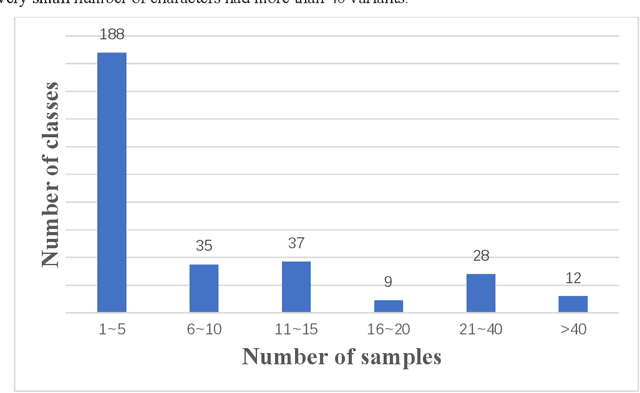
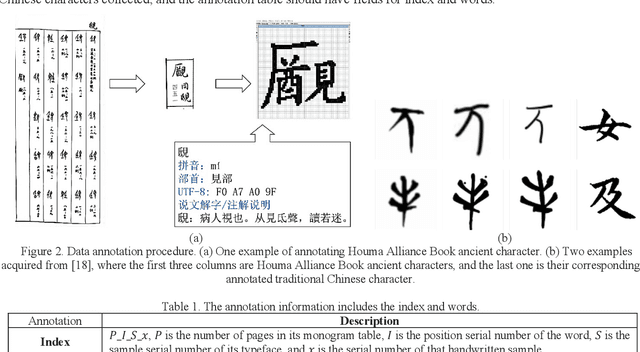

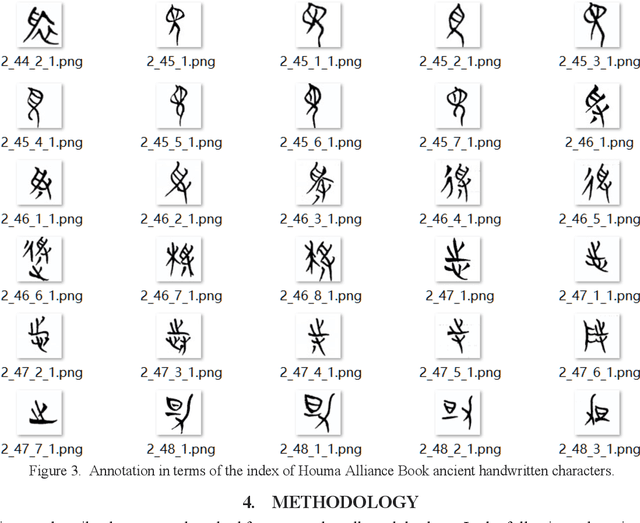
Abstract:The Houma Alliance Book is one of the national treasures of the Museum in Shanxi Museum Town in China. It has great historical significance in researching ancient history. To date, the research on the Houma Alliance Book has been staying in the identification of paper documents, which is inefficient to identify and difficult to display, study and publicize. Therefore, the digitization of the recognized ancient characters of Houma League can effectively improve the efficiency of recognizing ancient characters and provide more reliable technical support and text data. This paper proposes a new database of Houma Alliance Book ancient handwritten characters and a multi-modal fusion method to recognize ancient handwritten characters. In the database, 297 classes and 3,547 samples of Houma Alliance ancient handwritten characters are collected from the original book collection and by human imitative writing. Furthermore, the decision-level classifier fusion strategy is applied to fuse three well-known deep neural network architectures for ancient handwritten character recognition. Experiments are performed on our new database. The experimental results first provide the baseline result of the new database to the research community and then demonstrate the efficiency of our proposed method.
Region attention and graph embedding network for occlusion objective class-based micro-expression recognition
Jul 13, 2021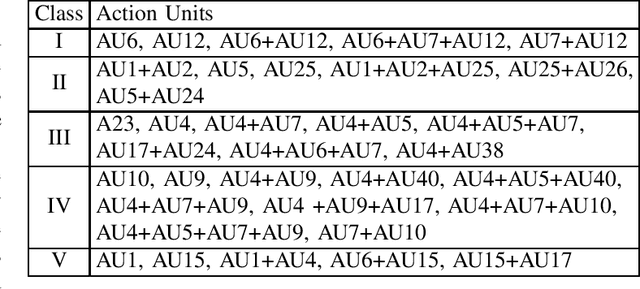

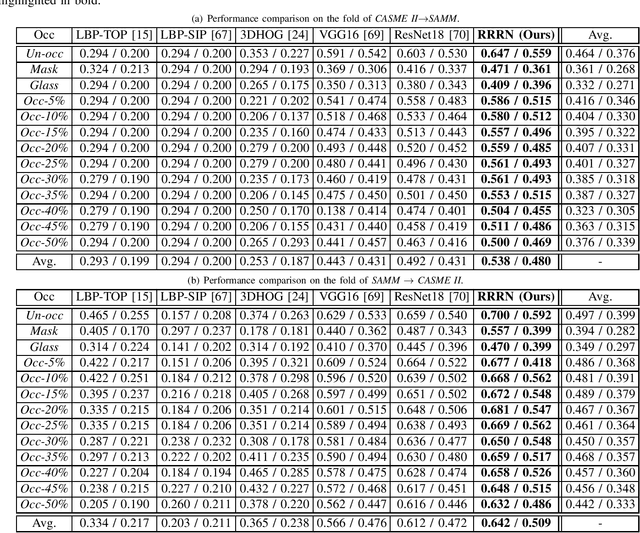
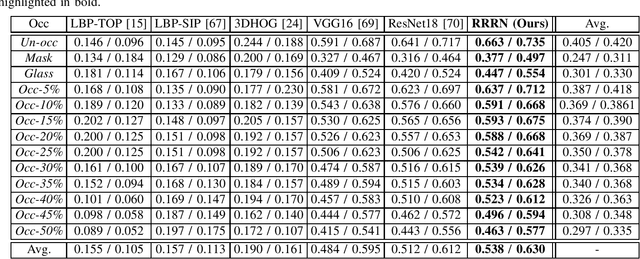
Abstract:Micro-expression recognition (\textbf{MER}) has attracted lots of researchers' attention in a decade. However, occlusion will occur for MER in real-world scenarios. This paper deeply investigates an interesting but unexplored challenging issue in MER, \ie, occlusion MER. First, to research MER under real-world occlusion, synthetic occluded micro-expression databases are created by using various mask for the community. Second, to suppress the influence of occlusion, a \underline{R}egion-inspired \underline{R}elation \underline{R}easoning \underline{N}etwork (\textbf{RRRN}) is proposed to model relations between various facial regions. RRRN consists of a backbone network, the Region-Inspired (\textbf{RI}) module and Relation Reasoning (\textbf{RR}) module. More specifically, the backbone network aims at extracting feature representations from different facial regions, RI module computing an adaptive weight from the region itself based on attention mechanism with respect to the unobstructedness and importance for suppressing the influence of occlusion, and RR module exploiting the progressive interactions among these regions by performing graph convolutions. Experiments are conducted on handout-database evaluation and composite database evaluation tasks of MEGC 2018 protocol. Experimental results show that RRRN can significantly explore the importance of facial regions and capture the cooperative complementary relationship of facial regions for MER. The results also demonstrate RRRN outperforms the state-of-the-art approaches, especially on occlusion, and RRRN acts more robust to occlusion.
 Add to Chrome
Add to Chrome Add to Firefox
Add to Firefox Add to Edge
Add to Edge